Power Systems
The management and operation of power systems, which include generation, transmission, distribution, and control, relies heavily on electric power conversion. To guarantee reliable and steady delivery of energy from the source to the end consumers, each phase of the power system relies on efficient power conversion. Understanding these applications emphasizes the role of power electronics in modern power systems.
Power Generation
The process of generating electrical energy from various kinds of sources, including nuclear energy, fossil fuels, and renewable resources, is known as power generation. Technologies for power conversion are crucial at this stage to maximize production and efficiency.
Thermal Power Plants:
Function: Transform fuel combustion heat energy into electrical energy.
Role of Power Conversion: Transformers and other conversion devices are used to change the AC power produced by steam turbines into the proper voltage and frequency for the grid.
Hydroelectric Power Plants:
Function: Utilize the water's potential energy to power turbines and produce electricity.
Role of Power Conversion: Power from AC generators has to be transformed and synchronized with the electrical characteristics of the grid.
Renewable Energy Sources:
Function: Incorporate geothermal, wind, and solar power; each requires a different conversion technology.
Role of Power Conversion: Inverters are used in solar power to convert the DC output from photovoltaic panels to AC. Before being integrated into the grid, power electronics transform the variable frequency AC electricity generated by wind turbines into stable AC power.
Power Transmission
The high-voltage transfer of electricity from power plants to substations close to inhabited regions is known as power transmission. In order to reduce losses and preserve system stability, efficient power conversion is essential.
High Voltage Direct Current (HVDC) Transmission:
Function: Long-distance electrical transmission with reduced losses in comparison to AC transmission.
Role of Power Conversion: AC power is converted to DC for transmission and back to AC for distribution by converter stations at both ends of the HVDC line. High power handling rectifiers and inverters are used in these conversions.
AC Transmission:
Function: Frequently employed for short-distance and regional transmission.
Role of Power Conversion: Transformers reduce the voltage for distribution and increase it for transmission. Reactive power compensation devices, such as static VAR compensators (SVCs), use power electronics to keep voltage stable.
Power Distribution
The last step in getting electricity to customers is power distribution. Stepping down high-voltage transmission electricity to lower voltages appropriate for commercial, industrial, and domestic use is what it entails.
Distribution Transformers:
Function: Step down transmission lines' high-voltage power to lower voltages for end-users.
Role of Power Conversion: Reduce losses while ensuring effective voltage conversion.
Voltage Regulators:
Function: Despite changing load conditions, keep voltage levels stable.
Role of Power Conversion: Automatic voltage regulators (AVRs) and other power electronic devices modify the output voltage in accordance with demand.
Distribution Automation:
Function: Make electricity distribution networks more reliable and efficient.
Role of Power Conversion: Power electronic devices, such smart grid technologies that optimize power flow and minimize outages, are used for real-time monitoring and control.
Power Control
In order to guarantee reliable and efficient power system operating, power control includes the management and regulation of electrical power. Various control systems rely heavily on power conversion technologies.
Grid Stability and Frequency Regulation:
Function: To keep the grid stable, maintain a balance between power generation and consumption.
Role of Power Conversion: Power electronics, including battery energy storage systems (BESS), absorb or inject power as needed to respond quickly to grid frequency fluctuations.
Load Balancing:
Function: To prevent overloading any one component, uniformly distribute electrical loads throughout the power system.
Role of Power Conversion: In order to balance loads and increase system efficiency, power converters and controllers dynamically modify power flow.
Fault Detection and Isolation:
Function: To avoid widespread outages, identify and isolate power system faults.
Role of Power Conversion: Real-time monitoring and control are made possible by advanced power electronic devices and systems, which enable quick fault segregation and identification.
Industrial
An essential component of industrial applications, electric power conversion makes it possible for automation systems, energy management solutions, and machines to operate reliably and efficiently. Strong and accurate power conversion technologies are necessary in industrial settings to guarantee energy efficiency, safety, and productivity. The main uses and significance of power conversion in industrial settings are explored in this section.
Motor Drives and Control
The foundation of industrial machinery, electric motors power everything from robotics to conveyor belts. Controlling these motors, maximizing their performance, and improving energy efficiency all depend on power conversion technologies.
Variable Frequency Drives (VFDs):
Function: By altering the frequency and voltage of the power supplied to the motor, VFDs regulate the speed and torque of AC motors.
Role of Power Conversion: Inverters are used by VFDs to convert DC back to AC at the desired frequency after rectifiers have converted AC to DC. This enhances process control and lowers energy usage by enabling precise motor speed control.
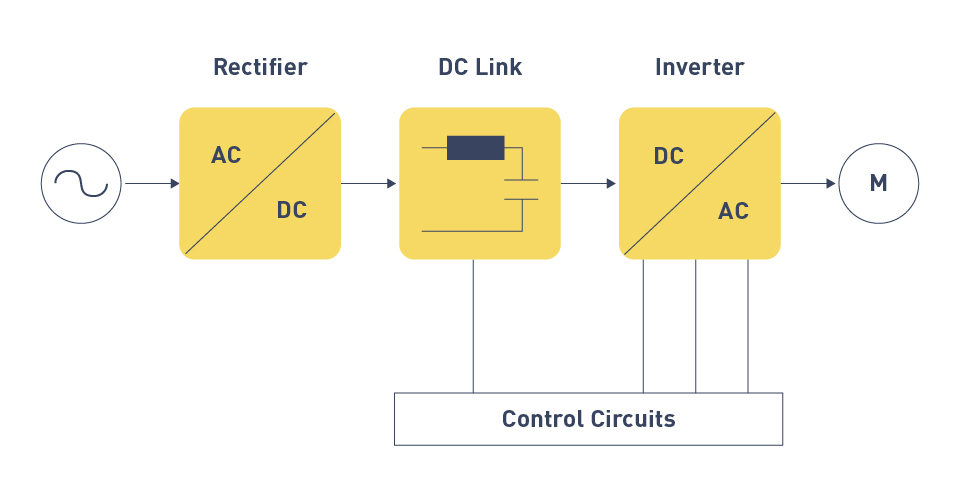
Figure 5: VFD circuit block diagram
Servo Drives:
Function: Give automation and robotic systems accurate control over motor position, speed, and torque.
Role of Power Conversion: To provide servo motors with the power and control signals they require, servo drives employ sophisticated power electronics, allowing for precise and responsive operation.
Power Supplies for Industrial Equipment
Industrial equipment requires reliable and constant power supplies to function properly. Power conversion technologies ensure that the equipment receives the correct voltage and current, regardless of the supplied power.
Uninterruptible Power Supplies (UPS):
Function: Offer backup power and guard against surges and power outages.
Role of Power Conversion: Inverters are used by UPS systems to convert stored DC back to AC during an outage, and rectifiers are used to convert incoming AC to DC for battery charging.
Industrial Power Supplies:
Function: Transform high-voltage AC power into lower-voltage DC power that can be used with industrial instrumentation and control systems.
Role of Power Conversion: Regulators, rectifiers, and transformers are used by power supplies to provide steady DC output.
Energy Management and Efficiency
Due to the substantial energy consumption of machines and processes, energy efficiency is a major concern in industrial settings. Technologies for power conversion are essential for controlling and maximizing energy use.
Energy Storage Systems:
Function: Improve energy management and cut expenses by storing energy for usage during periods of high demand or power outages.
Role of Power Conversion: Converting AC to DC for storage and DC to AC for usage, battery energy storage systems (BESS) use converters to charge and discharge batteries.
Power Factor Correction (PFC):
Function: Boost industrial electrical systems' power factor to lower reactive power and increase energy efficiency.
Role of Power Conversion: Capacitors and power electronic circuits are used by PFC devices to bring the power factor closer to unity.
Process Automation and Control
Power conversion technologies are essential for the reliable and precise operation of automation and control systems.
Programmable Logic Controllers (PLCs):
Function: Automate industrial operations by using programmed instructions to control machines and equipment.
Role of Power Conversion: PLCs frequently use power converters to control input and output signals and require steady DC power supplies.
Industrial Automation Systems:
Function: Organize and manage complex industrial procedures to boost efficiency and productivity.
Role of Power Conversion: To control the power needs of sensors, actuators, and control circuits, automation systems employ a variety of power conversion devices.
Welding and Heating Applications
For industrial welding and heating operations to produce the intended results, electrical power must be precisely controlled.
Welding Power Supplies:
Function: Supply the voltage and current required for welding operations.
Role of Power Conversion: Transformers, rectifiers, and/or inverters are used in different welding power supply designs to provide regulated DC or AC power for different welding processes.
Induction Heating:
Function: To efficiently and rapidly heat materials, use electromagnetic induction.
Role of Power Conversion: By converting DC to high-frequency AC via inverters, induction heating systems produce heat by generating eddy currents within the workpiece.
Automotive
Modern automotive technology relies heavily on electric power conversion, which is essential to the functionality and effectiveness of vehicles. Power electronics are becoming even more essential to the functionality and design of vehicles as a result of the move to electric and hybrid vehicles. The main uses and importance of electric power conversion in the automobile sector are explored in this section.
Electric and Hybrid Vehicles
Power conversion is now at the forefront of automotive innovation due to the growth of electric and hybrid vehicles. To control the flow of electrical energy between different components, these vehicles mostly rely on power electronics.
Traction Inverters:
Function: To power the electric motor, convert the battery's DC power to AC power.
Role of Power Conversion: Traction inverters enable precise control of motor speed and torque by converting DC to AC using power transistors (such IGBTs or MOSFETs).
Applications: Vital to supply the required propulsion in all EVs and HEVs.
DC/DC Converters:
Function: Reduce the main battery's high-voltage DC to lower voltage levels for battery management and auxiliary systems.
Role of Power Conversion: DC/DC converters ensure that the appropriate voltage is sent to several subsystems, including control units, infotainment, and lighting.
Applications: Used to maximize battery utilization and support auxiliary electrical systems in both EVs and HEVs.
Onboard Chargers:
Function: Charge the vehicle's battery by converting grid-supplied AC power to direct current.
Role of Power Conversion: Rectifiers and power factor correction circuits are features of onboard chargers that guarantee safe and effective charging.
Applications: Essential for facilitating quick and easy battery charging for all plug-in EVs and HEVs.
Battery Management Systems (BMS):
Function: Monitor and control the battery's state to ensure peak performance and long lifespan.
Role of Power Conversion: Power conversion circuits are incorporated into BMS to control charging and discharging cycles and balance cell voltages.
Applications: Crucial for preserving the efficiency and health of lithium-ion batteries in EVs and HEVs.
Conventional Internal Combustion Engine Vehicles
Power conversion technologies are used by even traditional internal combustion engine (ICE) vehicles to improve efficiency and support a variety of electrical systems.
Alternators:
Function: Transform the engine's mechanical energy into electrical energy to charge the battery and run the vehicle's electrical systems.
Role of Power Conversion: Rectifiers are used by alternators to transform the AC they produce into DC that is appropriate for the vehicle's electrical system.
Applications: All ICE vehicles come equipped with this standard feature to supply electricity and keep the battery charged.
Starter Motors:
Function: To start the engine, transform the battery's electrical energy into mechanical energy.
Role of Power Conversion: Power conversion circuits enable the high-current DC power needed by starter motors, ensuring reliable and effective starting.
Applications: used for engine igniting in all ICE vehicles.
Advanced Driver Assistance Systems (ADAS) and Autonomous Vehicles
The development of ADAS and self-driving vehicles has increased the demand for power electronics for various control and sensor systems.
Sensors and Actuators:
Function: Provide information and carry out control operations for functions such as automated braking, adaptive cruise control, and lane-keeping assistance.
Role of Power Conversion: In order to provide reliable and precise performance, power electronics regulate the voltage and current requirements for these sensors and actuators.
Applications: Found in modern automobiles with ADAS characteristics, as well as in the development of entirely self-driving vehicles.
Power Distribution Units (PDUs):
Function: Distribute electricity to the vehicle's several subsystems.
Role of Power Conversion: To effectively distribute power, PDUs make use of DC/DC converters and additional power management circuits.
Applications: Crucial for effective power management and distribution in both conventional and electric vehicles.
Energy Recovery and Regenerative Braking
Vehicle efficiency is increased via energy recovery systems, which are made to recover and reuse energy that would otherwise be lost.
Regenerative Braking:
Function: During braking, transform kinetic energy into electrical energy, which the battery stores.
Role of Power Conversion: In order to maximize energy recovery, inverters and converters control the energy flow from the motor/generator to the battery.
Applications: Standard in EVs and HEVs, which enhances energy efficiency and increases range.
Kinetic Energy Recovery Systems (KERS):
Function: Capture and store kinetic energy for use at a later time, usually in racing and high-performance vehicles.
Role of Power Conversion: Power electronics ensure effective energy management by regulating the energy capture and release processes.
Applications: used to improve efficiency and acceleration in high-performance vehicles and motorsports.
Renewable Energy
Electric power conversion is crucial to the effective harnessing, integration, and utilization of renewable energy sources. Power electronics are becoming more and more important in ensuring that renewable energy systems run effectively, consistently, and in harmony with existing grids as the emphasis on clean and sustainable energy continues to rise globally. The uses and importance of power conversion in renewable energy systems are explored in this section.
Solar Power Systems
One of the most popular renewable energy sources is solar power. To transform the DC electricity produced by photovoltaic (PV) panels into usable AC electricity, it heavily relies on power electronics.
Inverters:
Function: Transform the DC electricity generated by PV panels into AC power that can be fed into the grid and used in homes and businesses.
Role of Power Conversion: For the output to match the grid power's voltage, frequency, and phase, inverters are essential. Additionally, in order to optimize the energy collected from the PV panels, they integrate maximum power point tracking (MPPT) algorithms.
Applications: Crucial in utility-scale, commercial, and residential solar installations.
Microinverters:
Function: At the individual panel level, convert DC to AC.
Role of Power Conversion: Each solar panel can function independently due to microinverters, which maximizes the array's performance and improves system efficiency overall.
Applications: Used to increase energy yield and simplify system design in small-scale commercial and residential solar installations.
Charge Controllers:
Function: Control the amount of energy that the solar panels send to the batteries to avoid overcharging and to guarantee effective storage.
Role of Power Conversion: Charge controllers ensure safe and effective functioning by controlling the electricity flow to and from the batteries.
Applications: Utilized in hybrid solar power systems with battery backup and off-grid solar power systems.
Wind Power Systems
Using turbines, wind power captures the kinetic energy of the wind and transforms it into electrical energy. In order to control wind energy's variability and provide steady power output, power electronics are essential.
Converters:
Function: Transform wind turbines' variable-frequency AC power into steady AC power that can be added to the grid.
Role of Power Conversion: Inverters are used by converters to convert DC back to AC at the desired grid frequency, whereas rectifiers are used to convert AC to DC. In order to manage variations in wind speed and preserve ideal turbine performance, they also incorporate control systems.
Applications: Essential to all wind power installations, regardless of size, from small wind turbines to gigantic wind farms.
Pitch and Yaw Control Systems:
Function: To optimize energy extraction and prevent damage to the turbine, adjust the pitch (the angle of the blades) and yaw (the direction of the turbine).
Role of Power Conversion: The motors that regulate blade pitch and yaw are powered by power electronics, guaranteeing accurate and quick adjustments.
Applications: Utilized in modern wind turbines to improve reliability and efficiency.
Energy Storage Systems
Energy storage is crucial for improving grid stability, supplying backup power, and balancing supply and demand in renewable energy systems. These storage devices' cycles of charging and discharging are controlled by power electronics.
Battery Energy Storage Systems (BESS):
Function: Store extra energy produced by renewable sources and use it to supply electricity when demand is high or generation is low.
Role of Power Conversion: Converters ensure reliable and efficient operation by controlling the charging (AC to DC) and discharging (DC to AC) operations.
Applications: Utilized in utility-scale, commercial, and residential energy storage systems to promote the integration of renewable energy sources and increase grid stability.

Figure 6: BESS concept
Flywheels and Supercapacitors:
Function: Offer short-term energy storage and fast discharge capabilities.
Role of Power Conversion: Power electronics manage the flow of energy into and out of various storage devices, maximizing their performance and lifespan.
Applications: Used to regulate frequency, reduce peak power, and respond quickly to grid fluctuations.
Grid Integration and Smart Grids
The fluctuating and intermittent nature of renewable energy sources makes it difficult to integrate them into the power grid. Power electronics are crucial for maintaining compatibility and stability.
Grid-Tied Inverters:
Function: Align renewable energy systems' output with the grid.
Role of Power Conversion: The voltage, frequency, and phase of the power fed into the grid are all matched via grid-tied inverters. Anti-islanding protection is another feature they have to guarantee safety during grid failures.
Applications: Utilized in all renewable energy systems that are connected to the grid, such as hydropower, wind, and solar.

Figure 7: Grid-tied inverter operation
Flexible AC Transmission Systems (FACTS):
Function: Increase the grid's capacity to transfer power and improve its controllability.
Role of Power Conversion: Power electronics are used by FACTS devices, like unified power flow controllers (UPFCs) and static compensators (STATCOMs), to control reactive power, stabilize voltage, and enhance grid reliability.
Applications: Installed in transmission networks to make it easier for major renewable energy projects to be integrated.
Microgrids:
Function: Localized grids that can function both separately and in conjunction with the main grid.
Role of Power Conversion: In microgrids, power electronics control power distribution, guaranteeing effective use of locally produced renewable energy and facilitating a smooth transition between grid-connected and islanded modes.
Applications: Utilized to improve energy resilience and dependability in military installations, rural communities, campuses, and disaster recovery areas.
Consumer Electronics
A key component of modern consumer electronics, electric power conversion makes sure that gadgets run effectively, securely, and reliably. Power electronics are now essential for controlling power supply, conversion, and regulation due to the widespread use of portable and smart devices. The numerous uses and importance of electric power conversion in consumer electronics are explored in this section.
Power Supplies and Chargers
Power supply and battery chargers are two of the most basic consumer electronics devices that use power conversion. To give different devices the right amount of power, these devices transform and control electrical energy.
AC/DC Adapters:
Function: Convert wall outlets' alternating current (AC) to the direct current (DC) used by the majority of electrical gadgets.
Role of Power Conversion: Rectifiers are used in AC/DC adapters to convert AC to DC, and filters and regulators are then used to guarantee a steady DC output voltage.
Applications: Utilized to supply electricity to gaming consoles, laptops, televisions, and other home appliances.

Figure 8: AC to DC Adapter
Battery Chargers:
Function: Manage how rechargeable batteries in portable electronics are charged.
Role of Power Conversion: For chargers to give the proper charging voltage and current, AC/DC conversion is usually followed by DC/DC conversion. Charge management technologies are also included into advanced chargers to maximize battery longevity and health.
Applications: Crucial for wearable devices, computers, tablets, smartphones, and electric toothbrushes.
Power Management in Portable Devices
Sophisticated power management systems are essential for maximizing battery life and device performance in portable consumer devices like laptops, tablets, and smartphones.
DC/DC Converters:
Function: Adjust the DC voltage to meet the requirements of the various parts of the device.
Role of Power Conversion: By effectively regulating voltage, DC/DC converters guarantee that CPUs, memory, display units, and other components receive steady power without experiencing excessive energy loss.
Applications: Essential for digital cameras, computers, tablets, smartphones, and portable gaming consoles.
Power Management Integrated Circuits (PMICs):
Function: Optimize energy distribution and efficiency by combining several power management functions into a single chip.
Role of Power Conversion: PMICs regulate battery management, power sequencing, and voltage regulation, all of which are essential for the effective operation of portable electronics.
Applications: found in practically all modern portable consumer electronics, improving battery life and performance.
Display and Lighting
Power conversion technologies are used in consumer electronics' modern displays and lighting solutions to increase performance and efficiency.
LED Drivers:
Function: To guarantee constant brightness and color, control the power delivered to light-emitting diodes (LEDs).
Role of Power Conversion: In order to effectively control power, LED drivers frequently use DC/DC converters to transform input voltage into the proper current and voltage levels needed by LEDs.
Applications: Utilized in smart lighting systems, smartphones, tablets, TVs, and computer monitors.
Backlight Inverters:
Function: Transform DC electricity into the high-frequency AC power required for LCD screens backlighting.
Role of Power Conversion: Displays require illumination, and inverters make sure that the backlighting is steady and energy-efficient.
Applications: Essential for certain modern display technologies as well as older LCD screens.
Audio and Visual Equipment
For audio and video equipment to operate reliably and with excellent quality, power conversion is crucial.
Amplifiers:
Function: Boost the audio signals' strength to power speakers and headphones.
Role of Power Conversion: In order to guarantee a clean and steady power supply while reducing noise and distortion, amplifiers frequently employ DC/DC converters and linear regulators.
Applications: Utilized in professional audio equipment, headphones, portable speakers, and home audio systems.
Home Entertainment Systems:
Function: Manage and allocate power to different parts, including gaming consoles, Blu-ray players, and receivers.
Role of Power Conversion: For high-performance operation, these systems need effective power supplies that can manage various voltage levels and deliver steady power.
Applications: Found in integrated home entertainment systems, smart TVs, and home theaters.
Wearable Technology
For wearable technology, like fitness trackers and smartwatches, to function for extended periods of time using small, light power sources, effective power conversion is essential.
Micro DC/DC Converters:
Function: Manage power effectively while maintaining a small form factor.
Role of Power Conversion: These converters maximize power conversion and reduce energy loss, ensuring that wearable gadgets can run on small batteries.
Applications: Utilized in fitness trackers, smartwatches, and other wearable health monitoring gadgets.
Energy Harvesting:
Function: To prolong battery life or directly power devices, capture and transform ambient energy—such as solar, thermal, or kinetic energy—into electrical power.
Role of Power Conversion: In order to ensure that the low and variable output from ambient energy sources is appropriate for the device, energy harvesting systems employ power converters.
Applications: New developments in wearable technology, smart clothing, and remote sensors.

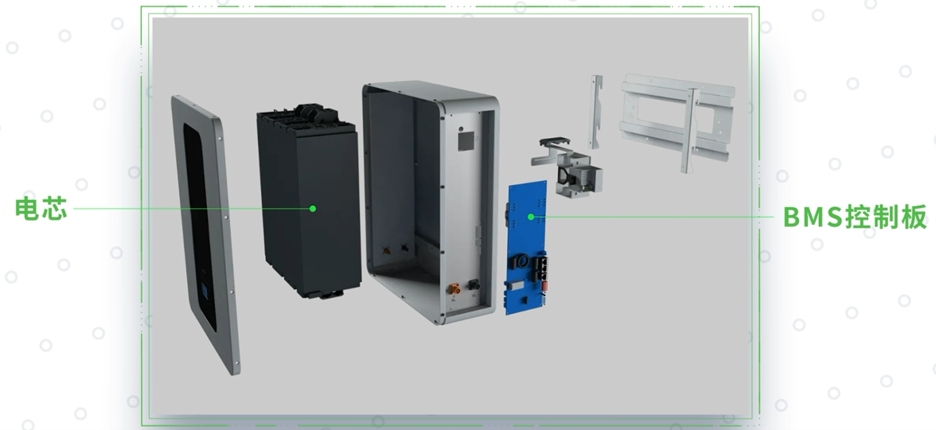


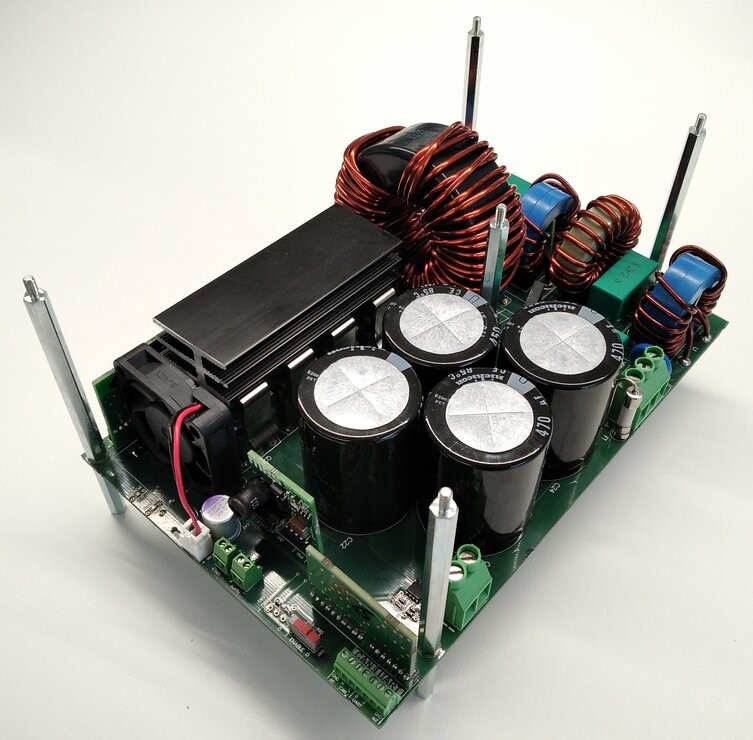
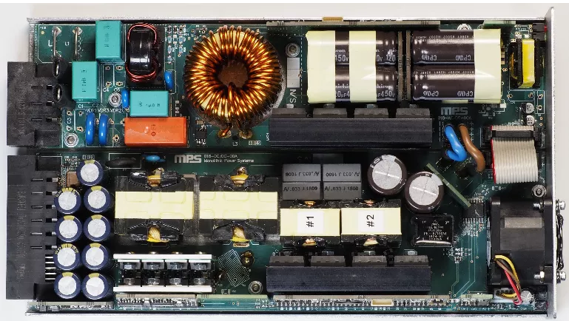
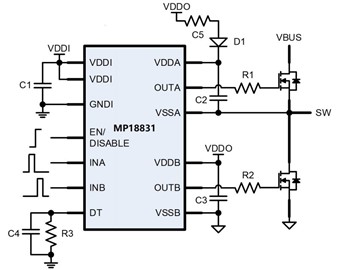
直接登录
创建新帐号